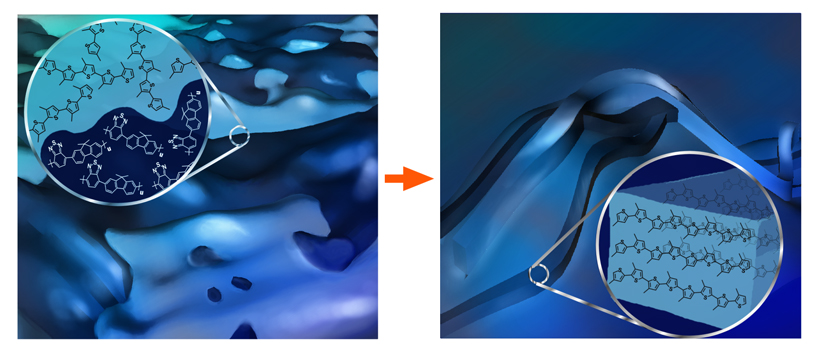Article in "The Journal of Chemical Physics" Describes New Approach to Making Cheaper, More Efficient Solar Panels
From the Journal: The Journal of Chemical Physics
WASHINGTON, D.C. Oct. 22, 2013 — Photovoltaic devices, which tap the power of the sun and convert it to electricity, offer a green — and potentially unlimited — alternative to fossil fuel use. So why haven’t solar technologies been more widely adopted?
Quite simply, “they’re too expensive,” says Ji-Seon Kim, a senior lecturer in experimental solid-state physics at Imperial College London, who, along with her colleagues, has come up with a technology that might help bring the prices down.
The scientists describe their new approach to making cheaper, more efficient solar panels in a paper in The Journal of Chemical Physics, produced by AIP Publishing.
“To collect a lot of sunlight you need to cover a large area in solar panels, which is very expensive for traditional inorganic — usually silicon — photovoltaics,” explains Kim. The high costs arise because traditional panels must be made from high purity crystals that require high temperatures and vacuum conditions to manufacture.
A cheaper solution is to construct the photovoltaic devices out of organic compounds—building what are essentially plastic solar cells. Organic semiconducting materials, and especially polymers, can be dissolved to make an ink and then simply “printed” in a very thin layer, some 100 billionths of a meter thick, over a large area. “Covering a large area in plastic is much cheaper than covering it in silicon, and as a result the cost per Watt of electricity-generating capacity has the potential to be much lower,” she says.

One major difficulty with doing this, however, is controlling the arrangement of polymer molecules within the thin layer. In their paper, Kim and colleagues describe a new method for exerting such control. “We have developed an advanced structural probe technique to determine the molecular packing of two different polymers when they are mixed together,” she says. By manipulating how the molecules of the two different polymers pack together, Kim and her colleagues created ordered pathways — or “nanowires” — along which electrical charges can more easily travel. This enables the solar cell to produce more electrical current, she said.
“Our work highlights the importance of the precise arrangement of polymer molecules in a polymer solar cell for it to work efficiently,” says Kim, who expects polymer solar cells to reach the commercial market within 5 to 10 years.
###
Article Title
Authors
Sebastian Wood, Jong Soo Kim, David T. James, Wing C. Tsoi, Craig E. Murphy and Ji-Seon Kim
Author Affiliations
Imperial College London, National Physical Laboratory in the United Kingdom, KAIST in the Republic of Korea
